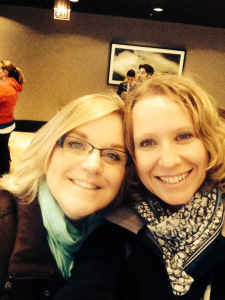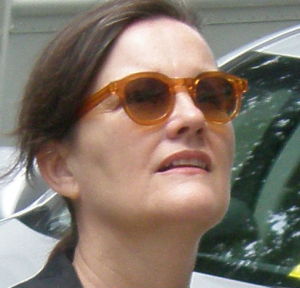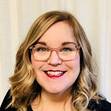Amy Sue Nathan's Blog: Women's Fiction Writers, page 28
November 19, 2014
Guest Post: Author Greer Macallister Ponders The Mystery Of Historical Fiction
 Today, author Greer Macallister tackles the age-old question of genre! Historical fiction, women’s fiction, romance. Does it matter? How do we fit? What does it mean? I’m not sure there are any definite answers, but Greer has it right. It’s the reader who matters, and our job is to deliver a good story. THAT’S what’s most important, no matter when, where, or how, your story exists.
Today, author Greer Macallister tackles the age-old question of genre! Historical fiction, women’s fiction, romance. Does it matter? How do we fit? What does it mean? I’m not sure there are any definite answers, but Greer has it right. It’s the reader who matters, and our job is to deliver a good story. THAT’S what’s most important, no matter when, where, or how, your story exists.
Please welcome Greer Macallister to Women’s Fiction Writers!
Amy xo
The Mystery of History
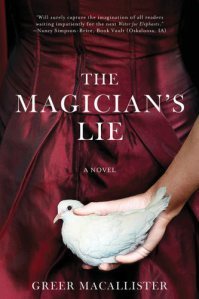 Much like “women’s fiction”, “historical fiction” is a term people can fight about all day long and then some. What does it mean? Who does it serve? What’s the point?
Much like “women’s fiction”, “historical fiction” is a term people can fight about all day long and then some. What does it mean? Who does it serve? What’s the point?
That’s the case with all genres, on some level. Recently, I saw a roundup of reviews in one of the major industry publications, and was astounded to see “Amish fiction” as its own category. Doesn’t that seem a little… specialized?
But then I thought about the readers.
If there are readers who are burning for Amish fiction, who want to read nothing but Amish fiction, who want to jam-pack their e-readers or their shelves or what-have-you with Amish fiction, then guess what? Genre has done its job.
It’s hard, still, for me to agree to “historical fiction” as a meaningful category. My book, The Magician’s Lie, is historical fiction about a female illusionist under suspicion for her husband’s murder. It’s set in 1905. It has less in common with The Other Boleyn Girl (“historical fiction”) than it does with Gone Girl (“contemporary” or “thriller” or “crime”, among other things, depending on who you ask.)
History is… well, history’s big. It covers the waterfront. Soldiers and outlanders, queens and architects, pilots and criminals. What could all these stories have in common? Just that they took place in the past? Just that they’re centered on some time which is not The Now? It seems a slender thread on which to hang anything at all.
And yet. It always comes back to that same question. With “Amish fiction”, with “historical fiction”, with “women’s fiction”: what about the reader?
Are there readers who want their fiction historical? I’m sure there are. There are likely more who want to drill down further, who prefer their historical fiction Gilded Age or WWII or alt-Victorian. For those readers, the “historical fiction” category is at least a starting point. Perhaps it’s like “romance” – you know what you’re going to get, on some level, but there is a great deal of excitement and variation and charm in the particular way that a particular author in a particular book leads you from The Beginning to The End.
If nothing else, genre can open up our eyes to the pleasant futility of expectations. No matter what someone tells you about a book – the genre, or how much they loved it, or that it was a bestseller – there is no substitute for experience. What matters about a book, when you sit down to read it, is whether you want to find out what’s on the next page.
In that way, you always make your own history.
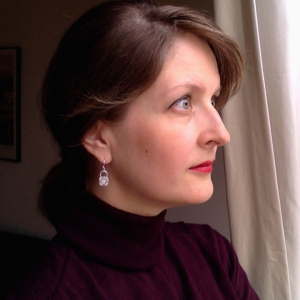 Raised in the Midwest, Greer Macallister is a poet, short story writer, playwright, and novelist whose work has appeared in publications such as The North American Review, The Missouri Review, and The Messenger. Her plays have been performed at American University, where she earned her MFA in creative writing. She lives with her family in Brooklyn.
Raised in the Midwest, Greer Macallister is a poet, short story writer, playwright, and novelist whose work has appeared in publications such as The North American Review, The Missouri Review, and The Messenger. Her plays have been performed at American University, where she earned her MFA in creative writing. She lives with her family in Brooklyn.
Read more about The Magician’s Lie here.








November 17, 2014
Giveaway & Guest Post: Author Tina Ann Forkner
I don’t do many giveaways on Women’s Fiction Writers so you know this is a big deal! Today author Tina Ann Forkner is giving away two of her three novels, WAKING UP JOY (published in October by Tule Publishing) and ROSE HOUSE, published in 2009. And just for kicks — I’m giving away a copy of THE GLASS WIVES to the winner as well. You’ve read all these books, you say? Well someone told me that some gift giving holidays are right around the corner!
I loved all Tina’s books but I have a special place in my heart for WAKING UP JOY, and today you’ll find out why. I also have a special place in my heart for Tina. We met when I was an anonymous mommy blogger in 2006 and have truly come a long way. All the way to meeting in person for the first time earlier this year!
Today you’ll read about Tina’s publishing journey, and you’ll likely be inspired for your own. Just leave a comment about your publishing journey—or about anything else reading, writing, book, or cute kitten related (I just love those cute kitty videos!)—and one lucky reader will win all three books! The winner will be chosen on Friday! US addresses only.
Amy xo
From La Rosaleda to Spavinaw Junction
by Tina Ann Forkner
Sometimes it takes a big shake-up to force change in a person. The same might be said of writers and their writing, at least this is what happened to me when I lost my editor during publisher lay-offs and my first literary agency closed its doors. None of these surprise events were personal, but they felt like it every time I sat down to write a new story. My confidence plummeted and since there was no guarantee of a third book, it didn’t seem to matter what I wrote anymore. My first two novels, Rose House and Ruby Among Us, were published by one of the big publishers, so I should have felt confident when I sat down to write, but those characters in the little Sonoma Valley town of La Rosaleda seemed content to rest where they were. In fact, the only time I felt happy as a writer was when I worked on this crazy story that nobody had ever seen. It wasn’t like those earlier novels, but it wasn’t unfamiliar to me. In this story, everything about the tiny little town of Spavinaw Junction felt vibrant and alive. The quirky characters weren’t content to stay hidden away in my secret file and they pulled me in. Writing about them felt like I was going back home, and in a way, I was.
This new story set in the South, as opposed to California, was about a small-town woman who loves sweet tea and cake. I knew her type, so I began to let the life I had led growing up in a small Northeastern Oklahoma town influence my story. Without a contract deadline looming over my head, I felt no pressure, so as the story evolved I somehow created a novel that was more my voice than ever. But would readers even be able to relate to a story that was so different than what I’d written before? My new characters had a Southern feel, and in the literary world Southern is a good thing, but there was something else about them that drew me into the story — something quirky in their superstitious personalities that I didn’t know if anyone would appreciate. It wasn’t magical-realism exactly, but the book contained a touch of the supernatural and a darker mystery swirling in the creeks around Spavinaw Junction, and all of it tempered by my character Joy’s brand of humor and romantic excursions. When I showed the novel to my author friend, Amy Sue Nathan, and she asked me how I came up with the things in the novel, I didn’t really have an interesting answer. I just knew about them. This more than anything was proof that I was writing what I was meant to write.
Everything about my novel, from the plot to the characters, is fictional, but it all came from the flavor of the region that I absorbed over the years. As in the novel, eventually titled Waking Up Joy, I grew up in an area situated in the corners of Arkansas, Missouri, and Oklahoma, just at the foot of the Ozarks. The South has a much bigger influence on that part of Oklahoma than the western part, so perhaps you could call it South by Midwest, but whatever it is, there’s definitely a Southern feel. And yes, the women love sweet tea and cake. People back home still bake, go to tiny country churches, and gossip about and love each other simultaneously. Not all people have a ton of money where I come from, but they have a wealth of generosity and love for family and community. People there live simple lives, but in some ways they are wiser than your most cultured city dweller. And once you learn the gossip and stories that weave throughout a small town, you often learn there are dark secrets, hard journeys, miracles, and joyous lives being lived, just like in Waking Up Joy. This was the stuff Spavinaw Junction, the little town in Waking Up Joy, was made out of before it became a town of its own, filled with fiction. I kept asking myself, “Why haven’t I written about this place before? It’s so me.”
In short, I think that by “going home” and being myself in my writing, I’ve come closer to finding my true voice. It also took my friend and card-carrying (I assume she has a Chicago driver’s license), cultured city dweller, Amy Sue Nathan, to convince me that I needed to not give up on this story. There were times that I emailed her and was so down I felt like the biggest failed author in history, and she assured me that this story was not bad and she liked the new direction I was going in. And as sweet as she is, she’s not the kind of person to lie in order to make me feel good about my story. To make a long story short, Amy eventually introduced me to my new publisher, Tule Publishing Group, who accepted my manuscript and promptly hired Amy as the book’s editor.
I feel so grateful now that Waking Up Joy has released. Being able to communicate this quirky Southern story about a simple small-town woman with a big ole heart to such a discerning reader as Amy gives me hope that maybe this story might continue to find a spot on other readers’ shelves. Because the truth is, no matter where we are from or what our backgrounds are, I think we all want the same thing that my main character Joy Talley wants—to have a joyful life.
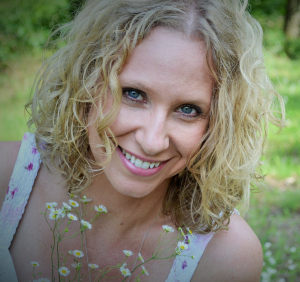 Tina Ann Forkner is a Women’s Fiction writer and the author of three novels including Rose House and Ruby Among Us. Her latest novel Waking Up Joy released in October 2014. Tina was raised in rural Oklahoma, but makes her home in Cheyenne, Wyoming with her husband, three teenagers, and two spoiled dogs. Learn more about her: www.tinaannforkner.com
Tina Ann Forkner is a Women’s Fiction writer and the author of three novels including Rose House and Ruby Among Us. Her latest novel Waking Up Joy released in October 2014. Tina was raised in rural Oklahoma, but makes her home in Cheyenne, Wyoming with her husband, three teenagers, and two spoiled dogs. Learn more about her: www.tinaannforkner.com
Want to read more about my friendship with Tina? Check out When A Nice Jewish Author Reads A Christian Novel on Huffington Post!
Now leave a comment and win some books!!!








November 12, 2014
Interview: Author Leslie Lehr Says Keep A Movie In Mind When Writing Your Novel To Keep Your Story Moving
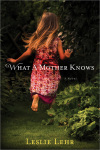 I’m so excited that Leslie Lehr is here with us today at Women’s Fiction Writers! Not only is Leslie sharing how she approached adapting her latest novel into a screenplay (as if that’s not enough), but she gives practical advice on how to keep our stories moving along to make them page turners!
I’m so excited that Leslie Lehr is here with us today at Women’s Fiction Writers! Not only is Leslie sharing how she approached adapting her latest novel into a screenplay (as if that’s not enough), but she gives practical advice on how to keep our stories moving along to make them page turners!
Please welcome Leslie Lehr to Women’s Fiction Writers!
Amy xo
Keep A Movie In Mind When Writing Your Novel To Keep Your Story Moving
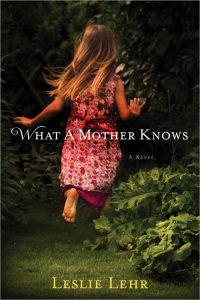 Amy: Welcome to Women’s Fiction Writers, Leslie! I was intrigued to learn you’re adapting your latest novel, What A Mother Knows, into a screenplay for an independent producer. Can you tell us a little about the story and why you think this story has the potential to make a good (great!) movie? (It’s something so many of us think of after we write, but maybe we should keep it in mind as we’re writing!)
Amy: Welcome to Women’s Fiction Writers, Leslie! I was intrigued to learn you’re adapting your latest novel, What A Mother Knows, into a screenplay for an independent producer. Can you tell us a little about the story and why you think this story has the potential to make a good (great!) movie? (It’s something so many of us think of after we write, but maybe we should keep it in mind as we’re writing!)
Leslie: Hi Amy, Thanks so much for inviting me! What could be more fun than talking about what I love to do?
As you mentioned, I just finished the screenplay adaptation for my novel, What A Mother Knows. And yes, I do believe we should keep a movie in mind while we are writing for two reasons.
First, if we write with the awareness of being the camera for our reader, we will work harder to translate the story we envision into words on the page. Most writers are familiar with the Show Don’t Tell advice that encourages us to describe the action on the page to allow the reader to experience the story along with the characters. Thinking of the movie in our minds helps us avoid relying on a narrator to interpret what is happening.
Second, envisioning your story as a movie can help strengthen the Narrative Drive. After creating a compelling character, I believe this is the most important element of any story. It addresses the bigger picture – the plot that drives the entire story forward. Since your hero is driving the story, think of the story as a car. You want it to be a fancy race car driving around twists and turns, bypassing extended detours that will slow the hero from getting to the final destination. You want to write a page-turner, a book that will keep your reader up all night. Thinking of your story as a movie will help you write it that way.
How do you write it that way? Aren’t most of us visual writers from the start? Don’t we watch the story of every book we read? Isn’t that why, if we read the book before we see the movie, we prefer the book version? It is the story we imagined.
I saw certain scenes of What A Mother Knows as a movie from the very beginning. To actually write it, I began with what the first scene might be. The first draft of the book was very different than the literary thriller that is now in bookstores. I planned the scenes by visualizing them, but also used words as my playground, writing poetic prose with parallel story lines that alternated until the end. It was great fun, but it lacked narrative drive. So I revised that work of art into a suspenseful page-turner. Same exact story!
You know how they say writing is rewriting? I think of it as a puzzle. No one really cares until you have all the pieces, the words on the page. For me, the hard part is thinking up that strong, detailed story. Once I have the first draft down, the fun begins. It’s like a puzzle and I get to move the pieces around to tell the story the best possible way.
Here’s the story:
A woman recovers from a fatal car accident and learns that, not only is she being held responsible for the death of the young man who was in the car, but her daughter, the only one who may know what happened that day, is missing.
While What A Mother Knows is categorized as a literary thriller, it’s structured as a detective story about a mom who has to become this kickass woman to find her daughter and – oh, by the way – defend herself from a murder charge. It’s a thriller because she’s in jeopardy, but thematically it’s a family drama – a love story about generations of mothers and daughters. Most of the women in the book are different kinds of mothers, all doing their best. The hero is a typical working mom, but she works in Hollywood, so she has to protect her children from all the bad influences that put food on the table. She recovers to find her world upside down – her son is away, her husband is working across the country, and the young man who was killed is a rock ‘n roll legend. So there’s a lot going on. But first and foremost: she is desperate to find her missing 16-year-old daughter.
Amy: Without giving too much away, what’s your favorite scene in the novel, What A Mother Knows? Was it one of the more difficult scenes to write, or one of the easier ones.
Leslie: My favorite scenes are when Michele, the hero, crosses the country searching for her daughter. Key West is one of my favorites, because she comes heartbreakingly close to finding her. It’s very visual, as she and her son run through the carnival in Jackson Square by the ocean at sunset. Ultimately, she loses quite a bit more by the end of this chapter. So this is a scene where she has a huge rise in hope – and the greatest fall. It was very challenging to write, because of the emotional arc. Every time I read it, I cry.
Amy: Do you think this scene will remain your favorite in the screenplay?
Leslie: Writing it for the screen was a challenge of compression. In the first draft of the book, I spent many pages of lush prose describing this colorful place and all the smells and sounds and heat. It even includes the Curry Mansion, an antique filled B&B that my aunt owns – so I’ve been there and it’s all real. Now it’s woven into very tight pages of vivid action. In the movie you will be able to see it all in a glance. I hope the actress can express the internal narrative, what Michele is thinking and doing at the end of the scene from the book. I want to be moved enough to cry.
There are other scenes I love just as much that will look great on the screen. Hawaii is an exciting scene – it used to open the book many drafts ago. The Hollywood chapter has a movie with in the movie, which has some critical visual surprises. There’s a hilarious bar scene in Venice Beach. And the love scene will make me blush. Perhaps being a writer is like being a mom. I love all my babies.
Amy: I think sometimes we get so caught in the business of writing that we lose the joy of writing. Are you enjoying the process of screen writing? How does it differ for you from novel writing?
Leslie: I’ve written and sold several original screenplays, but books are more fun to write. You have complete control of the words and the story world. You have one editor, who usually values each word on the page and is working to increase the clarity for other readers. With films, there are often many people who have to justify their parking spaces by offering opinions. And that’s part of the game. You never know whether the script will get to the screen, so it’s a bit like a game. There is far more money involved, so the stakes are higher for everyone. But to see an actor saying your words on the screen in a world you invented? Like the commercial says: it’s priceless.
That said, a script is essentially a blueprint for others to build upon. They don’t know what else you are thinking, because you have very little room for words on the page. You can’t describe much of the action, because that’s the director’s job. You can’t describe how the dialogue is spoken, because that’s the actor’s job. The setting is the productions designer’s job; the clothing is the costume designer’s job. There is a lot of Doors music in this book and some lyrics are used as clues, but who knows what the film composer will use?
To adapt the book, I had to boil the story down to the essence of each scene that advanced the plot. That’s where the Narrative Drive comes in – each action on the screen must move the story forward. So I made a list of events or revelations, then combined scenes and deleted others. So even though the book is tight and suspenseful, compressing 350 pages to a 110 page script of mostly dialogue was tough. The challenge is to do it while still expressing the emotional arc of the characters. At this point, I’m too close to the story to know if I succeeded enough for the producer to attract actors and get financing. So I may get another round of revisions. Or she may hire another writer who has a fresh perspective. But that’s okay. It’s like my baby has grown up and moved out. The book is still my baby.
Amy: Sometimes I worry so much about who will like the book I’m writing that I forget that first and foremost, I have to like it. What’s your advice to aspiring and other published authors for maintaining that joy of writing when “the word business” is your livelihood? You know, that feeling we get when we’re lost in a story, or tearing apart a paragraph, coming up with just the right word, while losing all sense of time?
Leslie: First of all, “the word business” has many angles. I do a lot of manuscript consulting to help others with story structure and that allows me to be more selective about what I write. I also lecture at conferences and seminars. So I write essays and novels that I want to read, or that say something that I can’t shut up about. I’ve crafted my career around writing, but I don’t publish as often as many. My hat is off to you and to others who do!
To answer your specific question, when I tire of writing a particular project, I try to explore the story from a different angle. I’ll work on a different character, a different scene, or a different element of style such as description or dialogue. Chapter openings and endings are important and can be fun to play with. I often begin the day by revising earlier pages to get in the mood and match the tone. And yes, once I have the story figured out and am in that zone, I can spend hours on crafting a sentence or selecting the perfect word to express the idea in my head. I agree, that’s a wonderful feeling.
I do usually write chronologically, except for the last scene. I always write that early to keep the excitement about where I’m headed. How can you hit the bull’s-eye if you can’t see the target? Of course, it often evolves or changes. But I have to say, the last scene of What A Mother Knows is incredibly close to the last scene in my very first draft!
Back to the question about whom we write for… My mother thinks I need to consider my reader before using swear words, describing love scenes, or having someone die. But I do. I write for me. And these days, I am far more likely to write a happy ending.
Thanks, Amy!
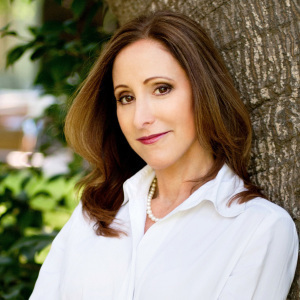 Leslie Lehr is a prize-winning author, screenwriter, and essayist who grew up in Ohio.
Leslie Lehr is a prize-winning author, screenwriter, and essayist who grew up in Ohio.
After graduating from USC’s School of Cinematic Arts with a Student Emmy, she spent several years in film production, rising to be the West Coast Production Manager of a commercial and music-video company, then went freelance to work on feature films. Once a mother, Lehr started writing seriously. Her humorous essays evolved into her first book, Welcome to Club Mom: The End of Life As You Know It – but the publisher changed the subtitle to The Adventure Begins. And it did…..
The what-ifs of modern motherhood drove Lehr to write her debut novel, 66 Laps, winner of the Pirates Alley Faulkner Society Gold Medal. Soon after, her screenplay, Heartless, was produced as an independent film. The romantic thriller financed five other films for Santa Monica Pictures, aired on USA TV and has been screening in Europe for eight years. Her next books were the nonfiction tomes, The Happy Helpful Grandma Guide, excerpted on FisherPrice.com; and Wendy Bellissimo: Nesting, featured on Oprah.
Her second novel, Wife Goes On, was a featured selection for the Pulpwood Queens Book clubs, with 250 chapters of tiara-wearing, book-sharing readers. She next wrote the screenplay, Club Divorce, for Lifetime.
What a Mother Knows, her new literary thriller, available at bookstores across the country, is a Recommended Read at Target.
Lehr’s essays have been published in the New York Times Modern Love column, Huffington Post, and anthologies including Mommy Wars (lauded on the Today Show), The Honeymoon’s Over, and Arianna Huffington’s On Becoming Fearless. She blogs for the Girlfriends Book Club and contributes to the Tarcher/Penguin Series “Now Write.”
Lehr has an MFA from Antioch University and is a popular panelist at literary and film conferences around the country. In addition to private manuscript consulting, she teaches at the world-renowned Writer’s Program at UCLA Extension and mentors writers to publication as the Novel Consultant for Truby’s Writers Studio. She is a member of PEN, The Authors Guild, WGA, Women In Film, and The Women’s Leadership Council of L.A.
On the personal side, she is currently incognito as Chemo Chick in Karen Rinehart’s breast cancer blog, Sick of Pink.
Lehr has two daughters and lives in Southern California.
http://www.leslielehr.com
FB authorleslielehr
Tw @leslielehr1
girlfriendsbookclub.org








November 10, 2014
Guest Post: The Solitude Of Writing by Bestselling Author Alyson Richman
 Those of us who write know it can be a solitary endeavor. I have friends who write in mini vans, at hockey rinks, on the beach. I can’t even sit in my own backyard and write. Ooh, look! A bunny!
Those of us who write know it can be a solitary endeavor. I have friends who write in mini vans, at hockey rinks, on the beach. I can’t even sit in my own backyard and write. Ooh, look! A bunny!
For me, it’s as much about the process as the inspiration. I need quiet to have thoughts filter in and through me to the page, but I also need privacy to 1) read aloud, 2) act out what I’m writing (watch out, as I will swat you if you happen to be nearby), and 3) alleviate the lure of distractions.
Today, I hope you’ll take time away from your writing to read Alyson’s Richman’s thoughts on solitude and writing. With five historical novels to her name, Alyson knows what works for her. So, t ell us. What works for you?
And please welcome Alyson Richman to Women’s Fiction Writers.
Amy xo
The Solitude of Writing
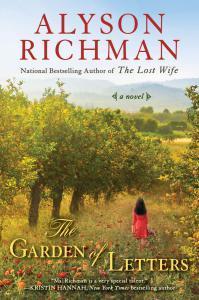 I have been on tour now for the past month promoting my latest novel, “The Garden of Letters”, which is about a young cellist who sends coded messages through her music for the Italian Resistance during WWII. While it’s been wonderful to connect with my readers and to do several panels with fellow authors whom I admire greatly, this is the first time in years that I’ve taken such an extended break from my writing.
I have been on tour now for the past month promoting my latest novel, “The Garden of Letters”, which is about a young cellist who sends coded messages through her music for the Italian Resistance during WWII. While it’s been wonderful to connect with my readers and to do several panels with fellow authors whom I admire greatly, this is the first time in years that I’ve taken such an extended break from my writing.
I have always been a creature of solitude. I love the quiet cocoon of my office, where I can dream in private. I love the glow from my computer as the words in my sentences appear and lengthen, as though I’m creating my own string of pearls.
I began publishing nearly straight out of college. I was an Art History major at Wellesley College, where my professors often told me I had a talent for telling “the story behind the painting.” I loved exploring not only the subject of the painting, but the artist who created it and the time period in which it was made. I enjoyed examining the psychological relationship between artist and muse, and mining for symbolism within the images rendered on the canvas.
I had lived for a year in Japan with my family when I was a teenager. Hoping to learn more about Japanese culture, I spent my Junior year abroad in Kyoto as an apprentice to a Noh mask carver. It took me nearly a year to carve a single mask out of a block of cypress wood. Every afternoon, I carved with three other Japanese students, learning the ancient techniques of recreating a mask whose spirit was supposed to first be infused by the carver and then later released onto the stage by the actor who wore it. When I returned to Wellesley for my senior year, and with my graduation looming, many people began to ask me what career I was going to pursue with my Art History degree. I now suspect many people close to me were not sure I’d find too many career options to choose from. At that crossroads, I realized what I’d love to do most would to be write stories about artists and their process of creating.
I remember thinking when I was studying in Kyoto, here I was, a Western woman studying a traditional Japanese art form. I asked myself, when did the reverse first occur? When did Japanese artists start studying Western-style art? When I asked my art-history professors upon my return to Wellesley, no one knew the answer. I immediately thought this would be wonderful backdrop for a novel. I then applied for a grant upon my graduation, which enabled me to research the initial Japanese artists who left there at the end of the Nineteenth century to study painting under the French Impressionists. It was during that post-graduation year that I began writing my first novel “The Mask Carver’s Son”, which is about the son of a Japanese mask carver who forsakes his family’s artistic traditions to study art in turn-of-the-century Paris.
I’ve seen so much change in the landscape of publishing since that novel was published nearly fifteen years ago. Back in 2000 when “The Mask Carver’s Son” was first published, when the publisher told the author they hoped your novel would find its readership through “word of mouth” or “grass roots”, it was an implicit message that they had no plans to actively boost the publicity for your novel with a costly print advertising campaign or national tour. If my novel was going to reach readers, it was going to be a long shot, and I had to hope that a wonderful support network of friends, librarians, and independent booksellers would recommend or hand sell my work.
The subsequent advent of social media helped writers like myself in many ways. When my fourth novel, “The Lost Wife”, came out in 2011, the publisher also had little plans for a tour or a traditional media campaign. Instead, they sent several advance reader copies to bloggers around the country, who helped spread the word about the novel in addition to the wonderful team of librarians and independent booksellers who are always essential in connecting books with readers. As a result, word of mouth springing from the internet became a more powerful tool for selling books than I could have ever imagined.
That said, I’m one of those authors that when aspiring writers ask me how I feel about social networking, I tell them I need to “turn off the noise” when I write. I have an office that has no internet. I write without music in the background, and never when my children are in the house. I need to be in a place where I can see my characters clearly and hear them speak without distraction. I believe that when I’m writing, I’m much like those artists I love to write about, writing and rewriting until the finished product glimmers as I always pictured in my head it would.
I believe in the slowness of the process, and the respect for the written word. My mother was a painter, who taught me to see the world through an artistic lens, and to appreciate color and texture, light, and shadow, and the importance of respecting positive space. Like a painter, I believe my sentences are brushstrokes that lead the reader through my story and create a world in which you can see with great vividness.
So soon, once I’ve finished traveling the book tour circuit, I’ll return to my home and close the door. To begin crafting my new novel. From the first sentence to the last, a world wholly my own.
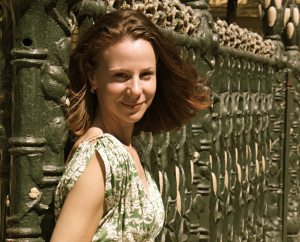 Alyson Richman is the internationally bestselling novel of five historical novels and her work has been translated into eighteen languages. Her novel, “The Lost Wife” is now in development to be a major motion film. Her latest novel, “The Garden of Letters” was just published in September 2014.
Alyson Richman is the internationally bestselling novel of five historical novels and her work has been translated into eighteen languages. Her novel, “The Lost Wife” is now in development to be a major motion film. Her latest novel, “The Garden of Letters” was just published in September 2014.
Visit Alyson’s website www.alysonrichman.com.








November 5, 2014
Guest Post: Naming Your Fictional Characters by Lynn Kanter
 Last week we pondered picturing our characters, and today we’re noodling about naming with author Lynn Kanter. How do you name your characters? Mine tend to arrive with name tags, meaning, I don’t get a choice. It was like that for Noah, Izzy Lane’s five-year-old son in The Good Neighbor. It was that way for Izzy’s eighty-five-year-old next-door-neighbor, Mrs. Feldman. But Izzy’s name was chosen by me. Sort of. The Good Neighbor is very loosely inspired by Christmas In Connecticut, a 1945 movie whose main character is Elizabeth Lane. That’s my main character’s name: Elizabeth Lane. Izzy is her nickname. To choose that nickname I Googled—you guessed it—nicknames for Elizabeth (there are so many). I also use the Social Security site for naming characters in line with the time and place a character was born. But more likely than not, they just tap me on the shoulder (or push me down) and tell me what their names are. I have more stories about the characters’ names in The Good Neighbor, but I’ll save those for another time!
Last week we pondered picturing our characters, and today we’re noodling about naming with author Lynn Kanter. How do you name your characters? Mine tend to arrive with name tags, meaning, I don’t get a choice. It was like that for Noah, Izzy Lane’s five-year-old son in The Good Neighbor. It was that way for Izzy’s eighty-five-year-old next-door-neighbor, Mrs. Feldman. But Izzy’s name was chosen by me. Sort of. The Good Neighbor is very loosely inspired by Christmas In Connecticut, a 1945 movie whose main character is Elizabeth Lane. That’s my main character’s name: Elizabeth Lane. Izzy is her nickname. To choose that nickname I Googled—you guessed it—nicknames for Elizabeth (there are so many). I also use the Social Security site for naming characters in line with the time and place a character was born. But more likely than not, they just tap me on the shoulder (or push me down) and tell me what their names are. I have more stories about the characters’ names in The Good Neighbor, but I’ll save those for another time!
How do you name your characters?
Please welcome Lynn to Women’s Fiction Writers, learn about her naming journey with her current novel, and add your stories to the comments!
Amy xo
Naming Your Fictional Characters
by Lynn Kanter
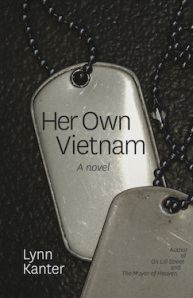 Have you ever struggled to name a child, a pet, even a business? It’s an awesome responsibility. That person, that company, will carry the weight of your decision forever.
Have you ever struggled to name a child, a pet, even a business? It’s an awesome responsibility. That person, that company, will carry the weight of your decision forever.
Novelists know this struggle intimately. We have to name every character in every book. Sometimes we get it wrong. Really wrong. Like I almost did with my newly published novel, HER OWN VIETNAM.
The book took me more than a decade to write. The main character – a nurse who served in Vietnam – is Della Brown. I named her sister Rosalie.
In a plot twist I could not have invented, my eventual publisher was also Rosalie – the writer/publisher Rosalie Morales Kearns. And she didn’t think a major character should be named after her.
So I decided it would be fun to run a contest and ask readers of my blog and Facebook page to suggest a new name for my character. People wrote in with amazing suggestions – 78 in all. Here’s how I selected a name out of all those options.
My choice was guided in part by writing issues. The new name had to have the same number of syllables and the same stress pattern as Rosalie, so it would not disrupt the rhythm of the sentences in which the original name appeared. It also had to sound good with the names of other characters in the book, and be appropriate for the character’s age, gender, race, class, region of the country, etc.
The name had to feel right to me. It had to convey strength, and it couldn’t be a name I associate with a real person. Among the suggestions were the names of my grandmother, my best friend’s mother, several friends, and an ex-girlfriend. Can you see why this might be problematic?
I finally selected a name that my publisher and I loved: Caroline Brown. I announced it on Facebook and my blog. I trumpeted the name of the contest winner who had suggested Caroline.
The next day, I had to take it all back.
Why? Because my book has another major character whose name is Charlene. And while the names Caroline and Charlene sound nothing alike, on the page they look very similar.
The reason I didn’t notice this immediately will seem ridiculous to anyone who doesn’t write fiction (and to most people who do). It’s because in the world of the novel, Caroline and Charlene never meet.
I had thought about all the people in Rosalie/Caroline’s life, what their names were, what nicknames they might have for her. But I forgot to think about the people who were not in her life, but were still in the book.
Luckily, I had 77 other names to consider. I chose Rosalind.
As in Rosalind Russell. And Rosalind Ashford of Martha Reeves and the Vandellas. And the scientist Rosalind Franklin, whose crucial role in understanding DNA was ignored and erased, while male colleagues Watson and Crick won Nobel prizes for research they based on her discoveries.
I was embarrassed by my public mistake, but I kept my word. All three people who had suggested either Caroline or Rosalind won the contest, and I thanked them in the book’s acknowledgements.
If you read HER OWN VIETNAM, you’ll get to meet Rosalind Brown and, I hope, grow to love her. But just between us, I still miss Rosalie.
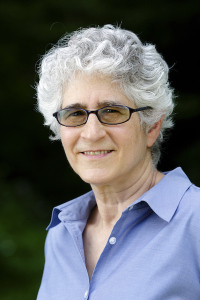 Lynn Kanter is the author of the novels Her Own Vietnam (2014, Shade Mountain Press), The Mayor of Heaven (1997) and On Lill Street (1992), both published by Third Side Press. She is a lifelong activist for feminist and other progressive causes, and has the T-shirts to prove it. Since 1992 Lynn has worked as a writer for the Center for Community Change, a national social justice organization. She lives with her wife in Washington, DC.
Lynn Kanter is the author of the novels Her Own Vietnam (2014, Shade Mountain Press), The Mayor of Heaven (1997) and On Lill Street (1992), both published by Third Side Press. She is a lifelong activist for feminist and other progressive causes, and has the T-shirts to prove it. Since 1992 Lynn has worked as a writer for the Center for Community Change, a national social justice organization. She lives with her wife in Washington, DC.
You can purchase HER OWN VIETNAM here: http://www.shademountainpress.com/lynnkanter.php It’s also available at Amazon and BN and all the usual book places online!
Want to learn more about Lynn Kanter?
Blog
https://twitter.com/LynnKanter
Goodreads page for Her Own Vietnam
https://www.goodreads.com/book/show/22398289-her-own-vietnam
Goodreads author page
https://www.goodreads.com/author/show/810259.Lynn_Kanter








November 2, 2014
Sweet Inspiration: How Food Network Helped Jumpstart My Writing Career
Can you believe it? It’s me, writing a post on my own blog. Going to try to do it more often from here out. I’ll write about my new book, The Good Neighbor, about writing, about life. They all intersect on most days, so why not?
Grab a cuppa and tell me about your first or most unusual inspiration in the comments!
Amy xo
Sweet Inspiration: How Food Network Helped Jumpstart My Writing Career
I’ve read the Sunday paper on and off my whole adult life. Lucky for me, in September of 2006 my reading stint was “on.” I stood at my dining room table, sorting through sections for what I wanted to carry to the sofa. Full disclosure—I hate the feel of newsprint—so the fewer pages to turn once sitting down, the better. Then, while still standing, a column caught my eye. I don’t remember the title, or the byline, but I do remember it was about kids’ soccer games and soccer snacks.
Something bold crossed my mind. “I could do that.”
Naiveté can be a beautiful thing.
Through some research I discovered the author of that piece was the editor of the Perspective section of my Sunday Chicago Tribune. By that time I’d had a popular “slice of life” or “mommy blog” for six or seven months. I had a background in journalism. I had moxie.
I also had nothing to lose.
The worst that would happen was that I’d get no reply.
I emailed the editor and introduced myself. I asked if they ever used freelance writers for Perspectives. I explained why I could write columns that would meet their needs and I attached links to my most popular blog posts.
And she wrote back the next day. She told me that there would be a new editor for Perspectives and that he’d be in touch. He was. Then for two months we talked and brainstormed. He wanted my first piece to really hit the mark. I emailed ideas for columns very similar to things I’d blogged about—life as a Jewish single mom in the suburbs. None of my ideas bowled him over. I remember him saying we’d find the right idea at some point, and that I should think about writing something about the holidays. It was November. I wracked my brain. I made lists. None of them were any good.
Then one night while walking through the family room en route to somewhere else, I passed the TV, which was on. This is normal at my house. Also normal at my house is Food Network. So, the TV was tuned to Food Network and there was a commercial for a show about baking cookies. I stopped in front of the screen.
Everybody loves cookies. I said it out loud. Then I said it again. EVERYBODY LOVES COOKIES!
I ran right to the dining room table where I kept my laptop, next to all the homework papers, backpacks, and folders. I wrote my column about holiday cookies in record time. Then I rewrote it. Then again. I researched some holiday cookie names. Then, after my kids went to bed, I pounded another column about the differences in speech from Philadelphia (where I was born and grew up) to Chicago (where I was raising my own kids), and I focused that piece on some of the words associated with Hanukkah. I was up until midnight, which is not my m.o. If you know me well, you know I’m in bed by ten.
The next morning I emailed both columns to my editor.
On December 6th, 2006 All-Purpose Treat Brightens Every Holiday Tradition was published in the Sunday Perspective Section of The Chicago Tribune.
On December 17th, 2006, At Hanukkah, How You Pronounce Latke Makes A World Of Difference was published.
After that I wrote about ten columns for Perspective over the next 2-3 years, until the Trib stopped publishing that section.
I believe that first column set in motion everything that has happened since.
That experience took me back to my journalism roots, somewhat, as this was part of the newspaper, with headlines (not titles) determined by space, not by cleverness. Although these were more essay than article, I worked with a seasoned newspaper reporter who was the interim editor. He showed extreme confidence in me. He explained every edit, talked through every change. He pushed me farther in my writing than I’d been pushed in fifteen years. He even encouraged me to link my blog to my columns. In retrospect, I should have. But at the time my blog was anonymous, just like the blog in The Good Neighbor, penned by Izzy Lane. The difference is that I wanted to be anonymous so that I could tell the truth. The truth about my meeting my ex’s girlfriend for the first time, the truth about the guy who met me for lunch wearing a wrinkled trench coat and didn’t even buy me a Diet Coke, the truth about life in the suburbs. In The Good Neighbor, Izzy is anonymous because she’s lying.
But just like Izzy, I realized there was only one way to go and that was forward, onward, upward. Life was no longer about being a blogger — this was about being a published freelance writer. Those Chicago Tribune columns were often picked up by other Tribune newspapers around the country. I pitched other publications and was published in them. And the very next year, I decided to try writing fiction. And we all know how that turned out. ;-)
It’s true I took action that day in September when I read the column about soccer snacks. I could have just thought “I could do that” and not emailed the editor. But I did. (I could have said I wanted to write a novel, too. And not done it.)
But—walking through the family room and being hit with the inspiration for the story about cookies from a TV commercial? That was good timing. That was being open. That was realizing if I didn’t try, I’d never know.
That was sweet.








October 29, 2014
Guest Post: How Do You Picture Your Fictional Characters? by Alana Cash
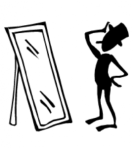 How much do you know about the characters in your writing? Do you know what they look like? I don’t. That’s right! I know everything about their lives and psyches and personalties and quirks, but not always the way they look. I don’t use doppelgängers. I know a few key things that help me write. For instance, in my upcoming novel, The Good Neighbor, Izzy Lane has short, layered hair that used to be long. She’s tall. Her eighty-five-year-old next-door-neighbor and confidante, Mrs. Feldman? I know she’s a vibrant octogenarian, but that’s it. Izzy’s best friend Jade is tall, and has long straightened hair, and Izzy’s cousin Rachel is short, and has short curly hair. WOW. I know hair, don’t I?
How much do you know about the characters in your writing? Do you know what they look like? I don’t. That’s right! I know everything about their lives and psyches and personalties and quirks, but not always the way they look. I don’t use doppelgängers. I know a few key things that help me write. For instance, in my upcoming novel, The Good Neighbor, Izzy Lane has short, layered hair that used to be long. She’s tall. Her eighty-five-year-old next-door-neighbor and confidante, Mrs. Feldman? I know she’s a vibrant octogenarian, but that’s it. Izzy’s best friend Jade is tall, and has long straightened hair, and Izzy’s cousin Rachel is short, and has short curly hair. WOW. I know hair, don’t I?
But I think I’m in the minority. I think most people really know what their characters look like. And that’s what’s so great about our guest post today. Here, Alana Cash gives examples and tools for really picturing your characters. Is that something you’d give a try?
I’m going to. I’m 75 pages into one WIP and two pages into another. Maybe this new method will spur my imagination in new and unusual ways.
And that’s always a good thing!
Please welcome Alana Cash to WFW. And share in the comments how you picture your characters!
Amy xo
Picturing Your Fictional Characters
by Alana Cash
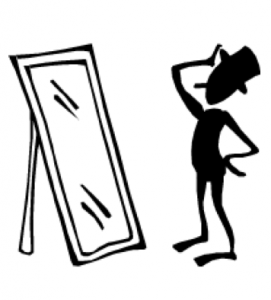 There are many styles of writing fiction. Some books are plot-driven with lots of drama or mystery or betrayal. Others are genre books that set up expectations of romance, sex, crime, fantasy, torture, etc. Some authors create a great plot and great characters (terrorist kidnapping in Bel Canto by Ann Patchett). Some authors create a wonderful sense of atmosphere and great characters (railroad yard in 1940s in Pelican Road by Howard Bahr). Some authors create a fantasy world and great characters (Harry Potter books by J.K. Rowling). The most enjoyable fiction always has memorable characters – people so real they are remembered like historical figures.
There are many styles of writing fiction. Some books are plot-driven with lots of drama or mystery or betrayal. Others are genre books that set up expectations of romance, sex, crime, fantasy, torture, etc. Some authors create a great plot and great characters (terrorist kidnapping in Bel Canto by Ann Patchett). Some authors create a wonderful sense of atmosphere and great characters (railroad yard in 1940s in Pelican Road by Howard Bahr). Some authors create a fantasy world and great characters (Harry Potter books by J.K. Rowling). The most enjoyable fiction always has memorable characters – people so real they are remembered like historical figures.
The way I write, and the way I taught others to write, is to create a solid character before beginning a story. This doesn’t mean that the story can’t be genre or plot-driven. It simply means that if a writer takes the time to create characters so real they seem like neighbors, the story will unfold more easily. And, if you can get readers to remember your characters, they’ll remember the title of your work.
I taught fiction writing at the University of Texas Informal Classes and, over time, developed a four-part formula for creating characters (based on The Art of Dramatic Writing by Lajos Egri):
Physical – height, weight, posture, foot size, age, etc.
Emotional – standard mood, in romantic relationship or not, relationship with family etc.
Psychological – IQ, introvert/extravert, educational level, etc.
Environmental – living environment/work environment, socioeconomics, etc.
The list is several pages long and it’s a good exercise for beginning writers to fill in all the blanks.
In the first class of each term, students created a character together, each person taking a turn filling in a blank round-robin style. Trying to make the character interesting, students often picked absurd traits: 5-feet tall, Olympic basketball player and plastic surgeon, blind in one eye, etc. They didn’t realize that it’s far more difficult to write a story about this type of character – more a characterization – than one they truly developed. To prove that to them, their assignment for the first week was to write a story about the character created by the group, then create their own character using the formula and write the same story, substituting the new character. Although based upon the same premise, their stories changed substantially.
I’ve used this formula in my writing and heard from more than one person that my characters seem like real people. In fact, one close friend actually told me she knew the people I wrote about in a particular story because I had introduced her to them. I had to laugh as they were made up. There are times that I’ve populated a story someone I know, changing her/him as much as possible and still suit the story, but not often. It’s so much more fun to make people up.
This year, I wanted to try my hand at writing a genre book about a shape-shifter, because I thought it would be fun since fantasy and supernatural stories are so far from my normal style of writing fiction. It wasn’t exactly fun, though, because I don’t think about fantasy or science fiction stories generally and I couldn’t get my fantasy protagonist (or any other important character) fully created. I found that as I tried to get a handle on her, she did her own shapeshifting. In the end, I got writer’s block because the story felt contrived and the characters didn’t feel real to me. I could write, but so much of what I wrote went off on tangents and had to be edited away.
I had to change the story into one that I could actually imagine. Only then could I get the characters made up. But since I had played around with my main characters so much, they felt blurry which presented another problem in writing about them. I considered dumping that story and starting a totally different story with a different sent of people.
Instead, for the first time ever, I went online to look at stock photos of people until I found someone who looked like my main character. It took a few hours, but I figured, why stop there and went online to look for images of several other characters. I printed out the photos and looked at them every time I started to write until the story took off. This kept me on the straight and narrow in terms of my character development and their actions.
So, this year I added a fifth dimension to my formula for creating a character, and I recommend it. It worked to focus the characters for me and it was a lot of fun. In changing my story from a fantasy paranormal to an exploration of the paranormal, I also learned to accept that just can’t write certain types of stories.
Multiple award-winning author and filmmaker Alana Cash is an adventurer. She’s trekked alone in war-torn Serbia and slept in a KGB interrogation room in Prague. She’s been to a gypsy fair in England, a bullfight in Laredo, and parasailing in Acapulco. She wore a bulletproof vest on a ride-along in an NYPD patrol car, and she’s kissed a man inside the Norman Bates Psycho House at Universal Studios.
Here are links to Alana’s blogs:
http://4yearsinbrooklyn.blogspot.com/
http://howyoulovetexas.blogspot.com/








October 15, 2014
Guest Post: An Author Fearing Forty by Meredith Schorr
Here’s a question for you…do you take your age into consideration when making your writing career goals? Your life goals that aren’t writing related? Have you changed your goals based on how old you are and what you have or haven’t accomplished?
I had my first essay published in a major newspaper when I was 42. My first novel was published by St. Martin’s Press when I was 49. At 50, I’m ready to ramp up, not slow down, or even accept the status quo in anything. I do know that birthdays are milestones, a way to mark time and accomplishments. Even in THE GOOD NEIGHBOR, my next novel, my main character, Izzy Lane, uses her own 40th birthday as a deadline to make a big change in her life. Birthdays are relatable. We all have them (when we’re lucky).
Today, Meredith Schorr shares her fear of turning 30 and then 40 — and how her next book tackles the age-old topic of women aging–what that means, and what it doesn’t.
Please welcome Meredith to WFW!
Amy xo
An Author Fearing Forty
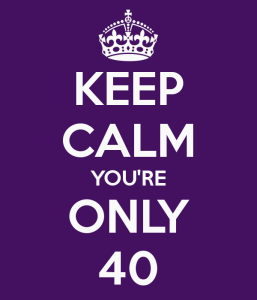 As a voracious fan of humorous women’s fiction, I’ve read a considerable number of books about a twenty-nine year old woman who is freaking out about the prospect of being single at the ripe old age of thirty. The running theme is that thirty is a major life milestone by which you must be married or else you’ll be designated a spinster. These books make me roll my eyes since I didn’t give much thought to my unmarried status or the viability of my ovaries when I turned thirty. Perhaps this was because I was still in the twenty-something partying phase and had so many friends who were single too. In fact, only a small percentage of my social circle was married when I turned thirty. To me, thirty is still very young, there are many fertile years left, and most women don’t even know what they want until they’ve lived through their twenties and had a chance to figure it out. In my humble opinion, it would behoove a woman to wait until at least thirty to consider getting married.
As a voracious fan of humorous women’s fiction, I’ve read a considerable number of books about a twenty-nine year old woman who is freaking out about the prospect of being single at the ripe old age of thirty. The running theme is that thirty is a major life milestone by which you must be married or else you’ll be designated a spinster. These books make me roll my eyes since I didn’t give much thought to my unmarried status or the viability of my ovaries when I turned thirty. Perhaps this was because I was still in the twenty-something partying phase and had so many friends who were single too. In fact, only a small percentage of my social circle was married when I turned thirty. To me, thirty is still very young, there are many fertile years left, and most women don’t even know what they want until they’ve lived through their twenties and had a chance to figure it out. In my humble opinion, it would behoove a woman to wait until at least thirty to consider getting married.
Turning forty, well that was an entirely different animal for me. I was not okay with it. In fact, I was terrified. From the day I turned thirty-nine, I counted down the months and then the weeks and then the days until my fortieth birthday with an increasing sense of dread and nausea in my belly. This is because aside from several more expertly-covered gray hairs, I didn’t look much different at thirty-nine than I did at twenty-nine and although my partying preferences had definitely slowed down a bit—choosing to have drinks before dinner instead of drinks instead of dinner—my lifestyle was the same as well. I still wasn’t married and I still didn’t have kids. Although a decade prior, I was not concerned by this, I definitely was now. I was afraid after I turned forty, my genes would fail me and I would begin to look older and lose my appeal to men before I found someone to love who would love me back. I was afraid people would start to refer to me behind my back as an old maid or question my sexual preferences. Although I’m not certain I want children, I didn’t like the idea that if I waited much longer, it might not be my decision to make. In short, forty felt like some magical number by which I had to make things happen or risk losing my window to settle down. I was not alone in this fear. I had several attractive and intelligent girlfriends in my age-range who were also single and counting down to their fortieth birthday with dread. Although it made me feel better to know I was not the only one, the relief was not substantial, especially because some of my friends spent our nights out complaining about the lack of decent, attractive, available men.
Almost every book I’ve read about a woman in my age group focused on her early mid-life crisis. Either she was facing an identity crisis, having spent the last decade taking care of her husband and raising kids, or she was divorced after her husband left her for another woman, or she was divorced and sleeping with a twenty-five year old man, or her husband had passed away and she was looking for a second chance at love. Many of these novels were very interesting and well-written, but I yearned for a book that spoke to me and my friends—about women who, for whatever reason, were still single at forty and still seeking their first chance at real, committed, long-term love. And so I decided to write it. My fourth novel, How Do You Know? is being released on December 2nd by Booktrope. It is about thirty-nine year old Maggie Piper who is torn between a desire to settle down by her fortieth birthday and concern that all is not perfect in her existing relationship. Although the book is fictional, through Maggie I was able to express the anxiety I faced as I approached the big 4.0.
For the record, turning forty was not so bad for me after all. Admittedly, it was probably because I had an amazing boyfriend at the time. We’ve since broken up and I am single (but dating) again. Although my worries have not disappeared, it has occurred to me that while my relationship status might not have changed since my early thirties, I have accomplished so much in the past decade of which I am incredibly proud, including the publication of three (almost four) successful novels. I try to keep this in mind when I find myself engaging in a pity party. Relationships are a big part of life, but other aspects should not be underrated. Just because I haven’t reached certain life milestones at the same rate as others doesn’t mean I won’t reach them eventually and when it is right.
After all, there are no deadlines in love.
 A born and bred New Yorker, Meredith Schorr discovered her passion for writing when she began to enjoy drafting work-related emails way more than she was probably supposed to, and was famous among her friends for writing witty birthday cards. After trying her hand writing children’s stories and blogging her personal experiences, Meredith found her calling writing “real chick lit for real chicks.” When Meredith is not hard at work on her current work in progress, she spends her days as a trademark paralegal. She is a loyal New York Yankees fan and an avid runner. Meredith has published three novels, Just Friends with Benefits, A State of Jane and Blogger Girl.
A born and bred New Yorker, Meredith Schorr discovered her passion for writing when she began to enjoy drafting work-related emails way more than she was probably supposed to, and was famous among her friends for writing witty birthday cards. After trying her hand writing children’s stories and blogging her personal experiences, Meredith found her calling writing “real chick lit for real chicks.” When Meredith is not hard at work on her current work in progress, she spends her days as a trademark paralegal. She is a loyal New York Yankees fan and an avid runner. Meredith has published three novels, Just Friends with Benefits, A State of Jane and Blogger Girl.
Here’s a link to Meredith’s books on Amazon, and here’s a link to pre-order How Do You Know?








October 8, 2014
Guest Post: Multi-Published Author Yona Zeldis McDonough Peels Back Her Women’s Fiction Covers
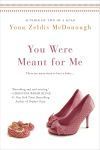 How many of us dream about what our book covers might look like, whether we’re two weeks, two months, or two years away from that process? When The Glass Wives was ready for a cover, I “let go” because not only did I know it was out of my hands and into those of a capable designer (and my editor), but I had no preconceived notions. I knew what I thought wouldn’t work—the popular cupcake, for instance. And if you’ve been around here for a while, or if you glance to the right, you’ll see why I was pleased. The cover for The Glass Wives captured the tone of the book. And THAT was what was most important to me. I have some thoughts (private thoughts) on what I think might work for my next book, THE GOOD NEIGHBOR, but we’re not quite at that stage (soon, though, soon).
How many of us dream about what our book covers might look like, whether we’re two weeks, two months, or two years away from that process? When The Glass Wives was ready for a cover, I “let go” because not only did I know it was out of my hands and into those of a capable designer (and my editor), but I had no preconceived notions. I knew what I thought wouldn’t work—the popular cupcake, for instance. And if you’ve been around here for a while, or if you glance to the right, you’ll see why I was pleased. The cover for The Glass Wives captured the tone of the book. And THAT was what was most important to me. I have some thoughts (private thoughts) on what I think might work for my next book, THE GOOD NEIGHBOR, but we’re not quite at that stage (soon, though, soon).
Today, amazing author Yona Zeldis McDonough who has written more than twenty children’s books and six novels for adults (and more) reveals what she thinks about the covers for her books. If you ask me (you did, right?) they’re beautiful, but we think so much about what our book covers convey and what they don’t. We wince if we think something is too light, too serious, too vague, too specific.
Share your thoughts in the comments. And take a look at Yona’s book covers as you welcome her back to Women’s Fiction Writers.
Amy xo
Click to view slideshow.
Take Cover!
by Yona Zeldis McDonough
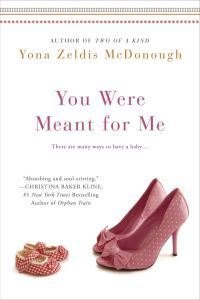 Let’s just agree to scrap that old adage about not judging a book by its cover because we know it’s a big, fat lie; we all judge books by their covers, especially when wading through a sea of them on shelves and tables at our local Barnes and Noble or indie bookstores. Covers instantly relay information about the kind of book and author we’re considering. They beckon to some readers and send others heading for the hills. They whisper, they tease, they cajole, seduce and shout. They are of vital importance and so we ought to just own up to that fact: what’s on the cover is crucial to getting a potential reader to actually pick up your book and look inside. As the author of six novels, twenty-three books for children and the editor of two essay collections, I know from whence I speak.
Let’s just agree to scrap that old adage about not judging a book by its cover because we know it’s a big, fat lie; we all judge books by their covers, especially when wading through a sea of them on shelves and tables at our local Barnes and Noble or indie bookstores. Covers instantly relay information about the kind of book and author we’re considering. They beckon to some readers and send others heading for the hills. They whisper, they tease, they cajole, seduce and shout. They are of vital importance and so we ought to just own up to that fact: what’s on the cover is crucial to getting a potential reader to actually pick up your book and look inside. As the author of six novels, twenty-three books for children and the editor of two essay collections, I know from whence I speak.
When my first novel, THE FOUR TEMPERAMENTS, came out from Doubleday in 2002, I was mostly pleased with the cover, which was dramatic, bold and intriguing. The dark background suggested the novel’s darker aspects and the placement of the violin suggested the sensual curves of a woman’s supine body. (That the dancer’s foot was depicted in an entirely incorrect position was something that bothered me but not the publisher, who would not change it when I pointed it out.) The cover was designed to appeal to women but not exclusively so; a man might read the book with censure or embarrassment. This, although I did not fully understand it yet, was a huge plus. My second book with Doubleday, IN DAHLIA’S WAKE, came out three years later. The cover photo—a delicately washed out image of a townhouse in brownstone Brooklyn—was evocative and gender neutral—good things—but also a bit tepid and unmemorable. The book did significantly less well than the first and I do have to wonder about the role the cover played in that.
When I published, BREAKING THE BANK, novel #3, I had switched publishers and was now at Downtown Press, a division of Simon & Schuster. Unlike the first two books, which came out in hardcover, this one was a paperback original. The cover, which showed a woman from behind over whose red umbrella a shower of bills rained down, was a good one—specific to the book, and attention getting in its own right. But the lone female in the red coat was beginning to inch toward chick-lit territory, a neighborhood I would soon inhabit more firmly with the publication of novels #4, A WEDDING IN GREAT NECK and #5, TWO OF A KIND.
The cover of Wedding depicts not just a woman but a bride from behind and the array of hands that fuss with her dress, as well as the Tiffany-box blue background and embossed gold lettering fairly pulsate with the damning words chick lit, chick lit. And the wedding-themed cover of TWO OF A KIND says the same. I happen to love both of these covers and feel they convey essential thematic information about the books. In the case of WEDDING, which is told from several points of view—though not the bride’s—I loved how the bride on the cover was being done to. She was an object, rather than a subject, a fact that underscores something important about the choice of narration I made in the book. In TWO OF A KIND, the couple (seen from the back—natch!) is seated apart, separated by an aisle. The man is looking straight ahead; the woman is turned in profile looking at him. From their body language we sense the tension and dissonance between them, postures that mirror precisely what transpires in the novel.
Novel # 6, YOU WERE MEANT FOR ME, is even further along the chick-lit spectrum. The dominant color scheme is pink and white. And it depicts shoes (read: girl-y) and not just any shoes either. Pink, peep-toed shoes, with white polka dots. And they face a pair of shoes made for a baby girl. Now I happen to love this cover. It’s is bold and arresting in its own right, and it really does speak to the book’s essential theme: how motherhood is almost a confrontation with a tiny new stranger. But it is also a very gender specific cover; no guy is going to be caught reading that book on the subway—not even my husband!
The chick lit association these covers also tend to lighten and even cheapen the words inside them. Now let me say something about chick lit here. Despite the fact that women are—and have historically always been—the big consumers of novels of all kinds, the books designed to appeal to our interests and sensibilities are somehow demoted and tainted with that chick lit brush. It’s a bad brush too: it says your book is unimportant, shallow, trivial and not well written. Never mind that when men write about relationships or domestic issues, they are hailed as brave and revelatory. When we women do it, we are relegated to the chick lit ghetto, a place from which it is hard to escape. I’m sorry to report that my very own indie bookstore, a store with the word community in its name, did not want to carry my new book, despite the fact that I have lived in the neighborhood for more than twenty years. When I expressed my disappointment to the owner of the store, he made it clear that he thought my book had little merit—because of its cover. Had he bothered to read or even look at it, he might have thought otherwise.
The ideal cover is gender neutral—one that either a woman or man would want to pick up. (Many women avoid books with high heels, birthday cakes and back views of female figures standing by the ocean or a lake too.) But most writers do not get a say in their covers. And even when they do, they still need to be attentive to the market place. My books are going to appeal to women, and so the covers should be appealing to them as well. If there are times when I feel the cover skims the surface and does not plumb the depths, so be it. As a wise friend said to me, “The cover is an ad. And the publisher is more experience in creating that ad than you do.” He was right. I am a novelist, not an advertizing copywriter or art director. And I know that the words contained within my covers are not ads. They are best and truest expression of what I think, observe, believe and feel and I can render. And I can only hope readers will find their way to them, whatever the covers that contain them.
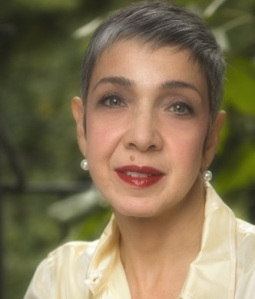 Yona Zeldis McDonough was educated at Vassar College and Columbia University. She is the award-winning author of six novels and twenty-three books for children, and she is also the editor of two essay collections and is the fiction editor at Lilith Magazine (www.lilith.org). She lives in Park Slope, Brooklyn, with her husband, two children and two small, yappy Pomeranians. Please visit her at http://www.yonazeldismcdonough.com and https://www.facebook.com/yzmcdonough.
Yona Zeldis McDonough was educated at Vassar College and Columbia University. She is the award-winning author of six novels and twenty-three books for children, and she is also the editor of two essay collections and is the fiction editor at Lilith Magazine (www.lilith.org). She lives in Park Slope, Brooklyn, with her husband, two children and two small, yappy Pomeranians. Please visit her at http://www.yonazeldismcdonough.com and https://www.facebook.com/yzmcdonough.








October 1, 2014
Guest Post: Traci Borum Asks: Do Books Move Or Manipulate You?
 I love to read while I’m writing. I love to read books that in some way tackle a topic, introduce a character, or explore a theme like one I’m writing. This allows me to not only read like a reader but like a writer. I note what works for me and what doesn’t, how I’d like to accomplish some thing like, or differently from, the author. So when Traci Borum emailed and told me her idea for a post on whether authors move to us authentic feelings or manipulate us — I was sold! What do you think? Do you identify when you feel like something in a book is being pushed at you? Do you mind? Is subtlety enough? Share your thoughts in the comments.
I love to read while I’m writing. I love to read books that in some way tackle a topic, introduce a character, or explore a theme like one I’m writing. This allows me to not only read like a reader but like a writer. I note what works for me and what doesn’t, how I’d like to accomplish some thing like, or differently from, the author. So when Traci Borum emailed and told me her idea for a post on whether authors move to us authentic feelings or manipulate us — I was sold! What do you think? Do you identify when you feel like something in a book is being pushed at you? Do you mind? Is subtlety enough? Share your thoughts in the comments.
Please welcome Traci Borum to Women’s Fiction Writers! (And check out the trailer for Traci’s book after you read her post!)
Amy xo
Do Books Move Or Manipulate You?
By Traci Borum
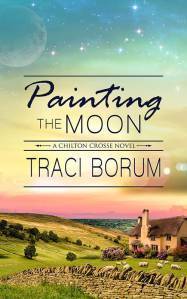 For authors, getting a reader to care about characters is vital. If readers don’t care, they probably won’t finish reading the book. But there’s a fine line between being moved and being manipulated. If your main goal as the writer is to produce tears in your reader, then be prepared for the backlash. Your efforts might just produce eye rolls instead of teardrops. A smart reader, a conscientious reader, can see right through that manipulation.
For authors, getting a reader to care about characters is vital. If readers don’t care, they probably won’t finish reading the book. But there’s a fine line between being moved and being manipulated. If your main goal as the writer is to produce tears in your reader, then be prepared for the backlash. Your efforts might just produce eye rolls instead of teardrops. A smart reader, a conscientious reader, can see right through that manipulation.
My friend Karen and I were having this conversation just last week. She had finished reading a popular best-selling novel that was recently turned into a film. And although she enjoyed the story, she felt pushed and prodded into liking it every inch of the way. She could see the writer…writing. She told me, “{The book} did have some excellent lines, but I didn’t get to feel like I discovered them. I felt like I was pushed down a neon-lit road to them: ‘Life-changing advice ahead! This way!’”
So how do we, as writers, evoke emotions in our readers without trying too hard? How do we avoid having readers peek behind the curtain, watching us work, knowing precisely what we’re up to? It’s actually pretty simple. Just write the story with truth. Stay honest in each moment. Be in that moment yourself, as you write it, and let the character, the plot, the dialogue, all ring with truth. Don’t worry about the reader’s reaction. Let the characters tell the story.
Also, it’s important to become invested in your own characters. If you care about your characters and you write them honestly, it will translate to your readers. They’ll be right there, alongside you, caring about what happens to these people.
Finally, be aware. Listen to your gut, your inner editor, and realize when you’re trying too hard—when you’ve got the readers’ reactions in mind more than the characters’ reactions.
A good way to test the “moving vs. manipulating” issue is to let someone read your work—a trusted friend, a beta reader, a critique partner. Don’t mention what your goal is (to test that your writing is authentic and not manipulative). But once they’ve read the book or the specific scene you’re worried about, then grill them. Ask about their reactions to the scene, to the characters. And be prepared for the result. If readers feel genuinely moved, they’ll talk about the characters and specifics of the scene, and their reaction will be written all over their faces. You’ll hear it in their tone of voice—an urgency, an excitement, an involvement in the story. And that tells you that you’ve succeeded. But, if readers shrug or feel lukewarm about a scene that should’ve been gripping or life-changing for the character—or if readers use phrases like “I didn’t really connect with it”—it’s time to go back to the drawing board. You might have to take a different approach, or change the setting or dialogue, or even re-think the entire scene. Whatever it takes, try again.
Because when readers are absorbed in your story, in your characters, then, trust me—when that character is in pain, or experiences a joyful moment, or when that character dies, your readers will be moved. They can’t help themselves. Because by that point, they’ve stopped seeing you write. They’ve quit trying to peek behind the curtain. By that point, they’re invested in what happens. You’ve made them care without even trying. No gimmicks, no tactics, no forcing of truths or tears. Just honesty.
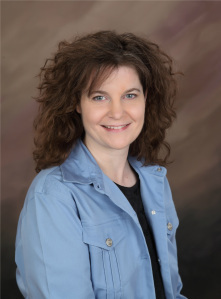 Traci Borum is a writing teacher and native Texan. She’s also an avid reader of women’s fiction, most especially Elin Hilderbrand and Rosamunde Pilcher novels. Since the age of 12, she’s written poetry, short stories, magazine articles, and novels.
Traci Borum is a writing teacher and native Texan. She’s also an avid reader of women’s fiction, most especially Elin Hilderbrand and Rosamunde Pilcher novels. Since the age of 12, she’s written poetry, short stories, magazine articles, and novels.
Traci also adores all things British. She even owns a British dog (Corgi) and is completely addicted to Masterpiece Theater-must be all those dreamy accents! Aside from having big dreams of getting a book published, it’s the little things that make her the happiest: deep talks with friends, a strong cup of hot chocolate, a hearty game of fetch with her Corgi, and puffy white Texas clouds always reminding her to “look up, slow down, enjoy your life.”








Women's Fiction Writers
- Amy Sue Nathan's profile
- 543 followers



